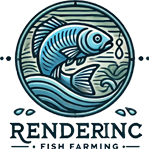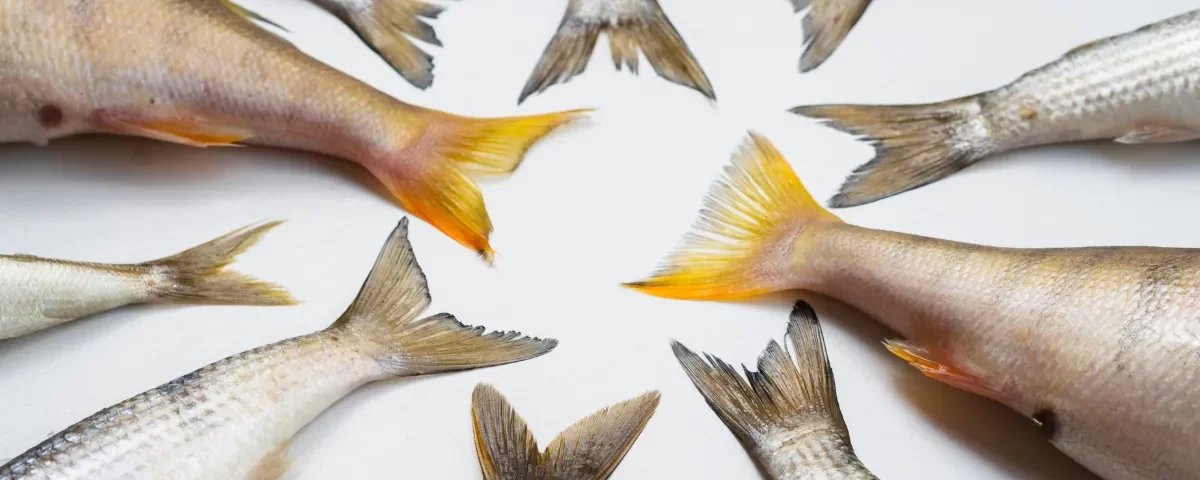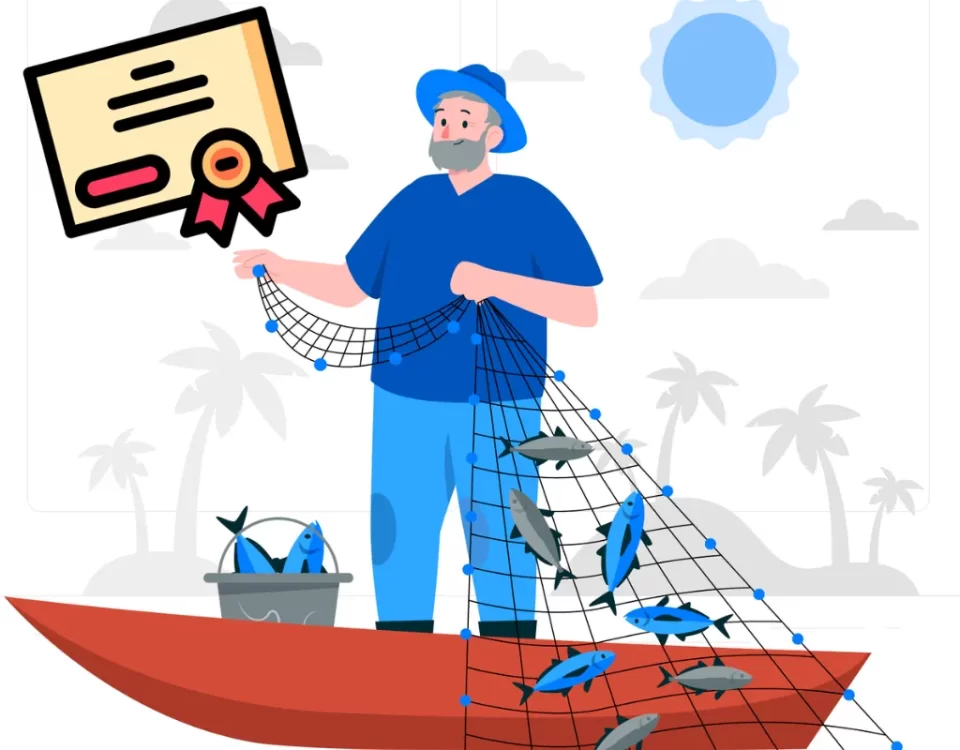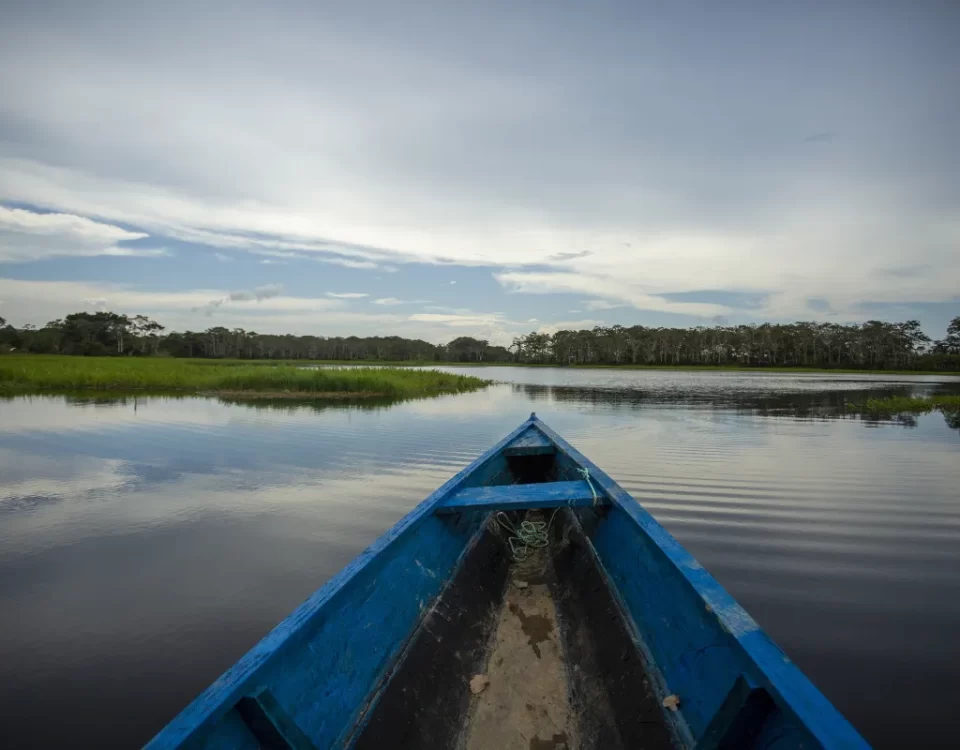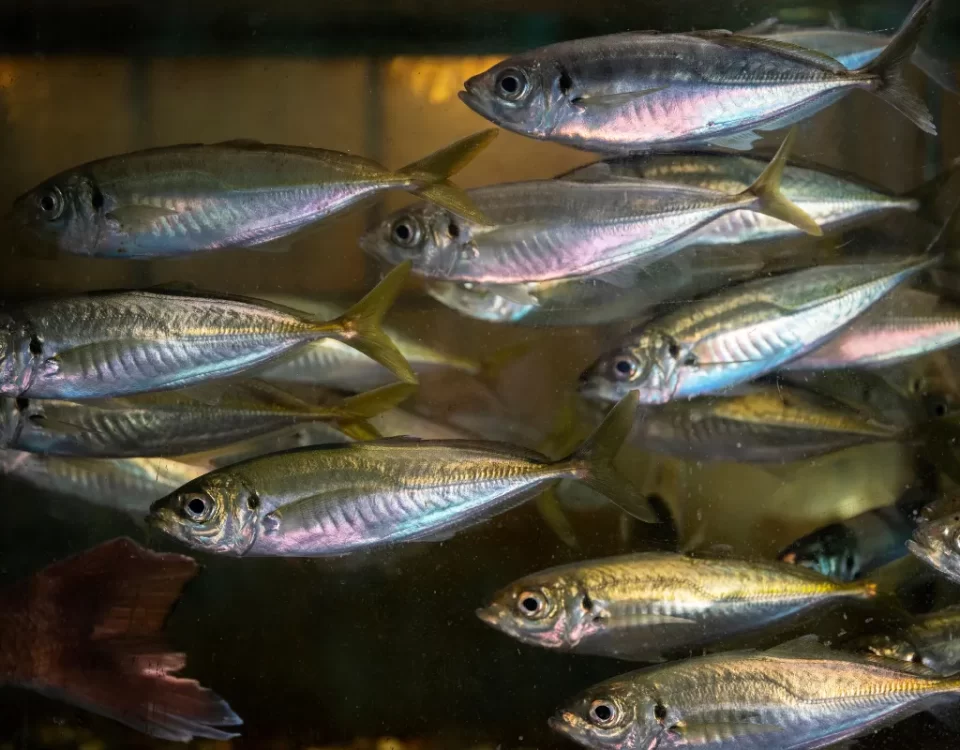Aquaponics vs. Aquaculture: Which is More Sustainable?

How AI is Revolutionizing Fish Farming: The Future of Aquaculture
September 18, 2024In the realm of sustainable farming practices, two methods have been gaining notable attention: aquaponics and aquaculture. While both involve the cultivation of aquatic life, they do so in distinct ways, each with its own set of unique benefits and challenges. Understanding the fundamental differences between these two methods is crucial for anyone venturing into fish farming and seeking to make an environmentally conscious choice.
Aquaponics is a closed-loop system that combines aquaculture (the farming of fish) and hydroponics (the cultivation of plants in water). In an aquaponic setup, fish waste provides essential nutrients for plants, which, in turn, filter the water and return it clean back to the fish. This mutually beneficial relationship between fish and plants forms the core principle of aquaponics, emphasizing symbiosis and resource efficiency.
On the other hand, aquaculture involves the intensive farming of fish in tanks, ponds, or enclosed areas. While aquaculture can be highly productive and profitable, it often requires the input of additional resources such as fish feed and water treatment chemicals to maintain suitable conditions for fish growth. As the world’s demand for seafood continues to rise, the sustainability of traditional aquaculture practices has come under scrutiny.
The growing interest in sustainable farming methods has led many farmers and entrepreneurs to explore the potential of aquaponics as a more ecologically sound alternative to conventional aquaculture. By recycling waste and conserving water, aquaponics offers a closed-loop system that minimizes environmental impact while maximizing yield. This shift towards more sustainable practices reflects a broader trend in agriculture towards regenerative and earth-friendly solutions.
As we delve deeper into the realms of aquaponics and aquaculture, it becomes clear that the choice between these two methods extends beyond mere production considerations, encompassing broader environmental, economic, and social implications. By critically examining the sustainability aspects of aquaponics and aquaculture, we can better appreciate the complex interplay between farming practices and the health of our planet.
Overview of Aquaponics
Aquaponics is a sustainable farming method that combines aquaculture (fish farming) and hydroponics (soil-less plant cultivation) in a closed-loop system. In aquaponics, fish and plants form a harmonious ecosystem where nutrients are efficiently recycled. This innovative approach not only maximizes space utilization but also minimizes waste production.
How Aquaponics Works
In an aquaponics system, fish are typically raised in a large tank or pond. The fish waste, rich in ammonia, is then pumped to the hydroponic component where it serves as a nutrient source for plants. Bacteria in the system convert the ammonia into nitrates, which are absorbed by the plants as fertilizer. The plants, in turn, filter the water and return cleaned water back to the fish tank, creating a cyclical process that benefits both organisms.
Symbiotic Relationship Between Fish and Plants
The symbiotic relationship in aquaponics is mutually beneficial. The fish waste provides essential nutrients for plant growth, helping them thrive without the need for external fertilizers. In return, the plants purify the water by removing toxins, ensuring a healthy environment for the fish. This symbiosis creates a self-sustaining ecosystem where each component relies on the other for growth and nutrient uptake.
Benefits of Aquaponics
One of the major advantages of aquaponics is its water conservation properties. Unlike traditional agriculture, which can be water-intensive, aquaponics recycles water within the system, minimizing the need for constant replenishment. Additionally, aquaponics promotes nutrient recycling, reducing the reliance on external inputs like chemical fertilizers. This sustainable approach not only conserves resources but also produces high-quality fish and vegetables in an environmentally friendly manner.
Overview of Aquaculture
Aquaculture, the practice of farming fish, crustaceans, mollusks, and aquatic plants, plays a significant role in the global food industry, providing a sustainable source of protein to meet the growing demand for seafood. This method of raising aquatic organisms in controlled environments such as ponds, tanks, or ocean enclosures has become increasingly popular due to its ability to supplement wild-caught fisheries and reduce pressure on marine ecosystems.
Definition and Significance
Aquaculture, also known as aquafarming, involves the breeding, rearing, and harvesting of aquatic organisms under controlled conditions. This practice not only contributes to food security but also aids in economic development by creating jobs and generating revenue for coastal communities. With the decline of wild fish stocks due to overfishing and environmental degradation, aquaculture has emerged as a viable solution to meet the growing demand for seafood.
Process of Fish Farming
The process of fish farming typically begins with the selection of suitable species based on market demand and environmental factors. Broodstock are carefully chosen for their genetic traits to ensure optimal growth and disease resistance in the offspring. These fish are then bred either naturally or through artificial insemination to produce a large number of fry. The fry are reared in hatcheries until they reach a size suitable for stocking in grow-out ponds or tanks.
Environmental Impacts
While aquaculture offers a promising solution to overfishing, it is not without its environmental challenges. Traditional aquaculture methods often involve the heavy use of chemicals, antibiotics, and fishmeal in feed, leading to pollution of water bodies and ecosystem degradation. Inadequate waste management practices can result in the accumulation of nutrients and contaminants, causing eutrophication and adverse effects on aquatic biodiversity. Sustainable aquaculture practices are thus essential to mitigate these environmental impacts and ensure the long-term viability of the industry.
Environmental Sustainability
When it comes to environmental sustainability, both aquaponics and aquaculture have unique characteristics that impact the environment. Aquaponics is often considered more sustainable than traditional aquaculture due to its closed-loop system that integrates aquaculture with hydroponics. Contrastingly, aquaculture involves raising fish or other aquatic animals in a controlled environment, which can lead to various environmental challenges.
Aquaponics vs. Aquaculture Environmental Impact
In terms of environmental impact, aquaponics stands out for its ability to minimize water usage and waste generation. In aquaponics, water is recycled within the system, reducing the need for large amounts of freshwater. On the other hand, aquaculture often requires high volumes of water to maintain the health and growth of aquatic animals, leading to potential water pollution and excessive resource consumption.
Reducing Water Usage in Aquaponics
One of the key benefits of aquaponics is its potential for significantly reducing water usage compared to traditional aquaculture practices. The closed-loop system in aquaponics allows for water to be continuously recycled between the fish tanks and the hydroponic beds, creating a sustainable cycle where the water is reused for both fish farming and plant growth. This efficient use of water is a major advantage for aquaponics in terms of environmental sustainability.
Challenges of Waste Management in Aquaculture
In traditional aquaculture, waste management poses a significant challenge as the accumulation of fish waste and uneaten feed can lead to water pollution and negative impacts on aquatic ecosystems. Managing waste in aquaculture systems requires careful monitoring and treatment processes to prevent environmental degradation. Implementing sustainable waste management practices is crucial for minimizing the environmental footprint of aquaculture operations.
In conclusion, while both aquaponics and aquaculture play important roles in providing seafood and plant-based products, aquaponics demonstrates greater potential for achieving environmental sustainability through its innovative system design, efficient water usage, and integrated waste management practices. By addressing the environmental impacts of aquaculture and harnessing the benefits of aquaponics, we can move towards a more sustainable future for fish farming practices.
Economic Sustainability
When considering economic sustainability in the realm of fish farming, both aquaponics and aquaculture present unique opportunities and challenges. Aquaponics, with its integrated system of raising fish and plants together, offers a more holistic and resource-efficient approach compared to traditional aquaculture methods. The symbiotic relationship between fish and plants in aquaponics can lead to cost savings in terms of water usage, feed costs, and fertilizers. However, the initial investment for setting up an aquaponics system can be relatively high, involving expenses for tanks, pumps, grow beds, and monitoring equipment.
On the other hand, aquaculture has been a well-established industry for many years, providing a more conventional and predictable model for fish farming operations. Aquaculture operations can vary in scale, from small family-run businesses to large commercial enterprises. While aquaculture may require more infrastructure and maintenance compared to aquaponics, it can potentially generate higher revenues due to the volume of fish produced. Profitability in aquaculture often depends on factors such as market demand, feed efficiency, and disease management.
Profitability Analysis
In terms of profitability, both aquaponics and aquaculture have their own strengths and challenges. Aquaponics systems, once established and optimized, have the potential to generate multiple revenue streams from selling fish, plants, and value-added products like herbs and vegetables. This diversification can enhance overall profitability and resilience to market fluctuations. Additionally, the organic and sustainable nature of aquaponics products can attract premium prices from environmentally-conscious consumers.
In comparison, aquaculture may focus primarily on fish production, which can be both a strength and a limitation. While aquaculture operations may have economies of scale and standardized production processes that boost efficiency, the market saturation and price volatility in the fish industry can impact overall profitability. Successful aquaculture businesses often incorporate innovative practices such as selective breeding, automated feeding systems, and water quality management to improve profitability and competitiveness.
Scalability for Commercial Production
Scalability is a critical aspect of economic sustainability for fish farming ventures aiming for commercial success. Aquaponics systems can be scaled up to suit various production levels, from small-scale urban farms to large commercial facilities. The modular nature of aquaponics allows for flexible expansion based on market demands and operational capacities. However, scaling up aquaponics systems may require additional investments in infrastructure, technology upgrades, and workforce training.
In contrast, aquaculture operations often have well-established production models that can be scaled up by expanding pond capacity, introducing processing facilities, and optimizing logistical processes. Larger aquaculture operations may benefit from economies of scale, bulk purchasing discounts, and efficient distribution networks. Nevertheless, scaling up aquaculture can also pose challenges related to environmental impact mitigation, regulatory compliance, and maintaining product quality consistency.
Social Sustainability
As we delve into the realm of aquaponics and aquaculture, we uncover a tapestry of social implications that weave through these agricultural practices. One of the key aspects to consider is the accessibility of locally grown food through these methods. Aquaponics, with its symbiotic relationship between aquaculture and hydroponics, offers a sustainable way to produce vegetables and fish in urban areas. By utilizing aquaponics systems, communities can access fresh, nutrient-rich produce and fish without relying heavily on traditional farming methods that may require long transport distances.
Accessibility of Locally Grown Food
The beauty of aquaponics lies in its ability to bring food production closer to urban areas, making fresh produce and fish more accessible to local communities. By setting up aquaponics systems in unused urban spaces or even indoors, individuals living in cities can enjoy the benefits of homegrown food without depending solely on commercial farming practices. This not only promotes food security but also fosters a stronger connection between urban residents and their food sources.
Job Creation and Community Engagement
Both aquaponics and aquaculture have the potential to create job opportunities and foster community engagement. In rural areas, aquaculture farms can provide employment for locals involved in fish farming operations. On the other hand, aquaponics systems in urban settings can spark community involvement through educational programs, workshops, and volunteer opportunities. By learning about sustainable food production methods, community members can actively participate in the growth and maintenance of these systems, creating a sense of ownership and pride in cultivating their own food.
In conclusion, the social sustainability aspects of aquaponics and aquaculture extend beyond just food production. These practices have the power to not only provide fresh, locally grown food but also to create meaningful connections between individuals and their food sources. By embracing the principles of sustainability and community engagement, both aquaponics and aquaculture pave the way for a more interconnected and empowered society.
Case Studies and Success Stories
Successful Aquaponics Projects Around the World
Aquaponics has gained popularity globally for its sustainable and efficient approach to agriculture. One standout example is the Growing Power project in Milwaukee, Wisconsin, where urban aquaponics systems have transformed abandoned lots into thriving farms. By integrating fish farming with plant cultivation, Growing Power has not only produced organic food but also created educational opportunities for the local community. Another noteworthy success is the Edenworks project in New York City, which utilizes aquaponics to cultivate greens on a commercial scale within a controlled environment. These projects showcase the potential of aquaponics to revolutionize urban farming practices and promote food security.
Innovative Aquaculture Practices
In the realm of aquaculture, innovative practices have been essential for enhancing sustainability and productivity. One standout example is the Integrated Multi-Trophic Aquaculture (IMTA) system implemented in Canada. IMTA combines different species such as fish, seaweed, and shellfish to create a symbiotic ecosystem that minimizes waste and maximizes resource utilization. This approach not only reduces the environmental impact of traditional fish farming but also diversifies revenue streams for farmers. Additionally, the use of recirculating aquaculture systems (RAS) in countries like Norway has revolutionized fish farming by significantly reducing water usage and contamination. These innovative practices highlight the importance of embracing technology and eco-friendly solutions in aquaculture.
Lessons Learned and Best Practices
From various case studies, several key lessons and best practices emerge for both aquaponics and aquaculture. Firstly, the importance of system integration cannot be overstated, as combining different elements within a closed-loop system enhances efficiency and reduces environmental impact. Secondly, ongoing research and education are crucial for continuous improvement in both industries, as new technologies and methods are constantly emerging. Furthermore, collaboration between stakeholders, including farmers, scientists, and policymakers, is essential for promoting sustainability and innovation. By sharing knowledge and experiences, the aquaponics and aquaculture industries can work together to address common challenges and pave the way for a more resilient and sustainable future.
As we delve into the realm of aquaponics and aquaculture case studies and success stories, it becomes evident that both methods offer unique benefits and challenges. While aquaponics excels in resource efficiency and urban farming applications, aquaculture innovations continue to enhance productivity and sustainability in traditional fish farming practices. By learning from successful projects around the world and embracing best practices, the aquaponics and aquaculture industries can collectively strive towards a more sustainable future for food production.
Challenges and Future Directions
When delving into the realm of aquaponics and aquaculture, it is crucial to acknowledge the challenges that both sectors face in their quest for sustainability. In aquaponics, one of the primary challenges is maintaining a delicate balance between fish waste as a nutrient source for plants and ensuring optimal water quality for the aquatic organisms. Any disruptions in this balance can lead to issues such as nutrient deficiencies in plants or toxicity for fish. Additionally, the upfront costs of setting up an aquaponics system can be a barrier for many newcomers to the industry.
On the other hand, traditional aquaculture faces challenges related to water usage and waste management. The concentration of fish in aquaculture farms can lead to pollution of surrounding water bodies if proper waste management practices are not in place. Disease outbreaks due to overcrowding are also a significant concern in aquaculture operations. Balancing sustainable production with economic viability remains a perpetual challenge for aquaculture practitioners.
In the realm of sustainable farming methods, ongoing research and innovation are paving the way for improvements in both aquaponics and aquaculture. Researchers are exploring new technologies such as recirculating aquaculture systems (RAS) and vertical farming to enhance resource efficiency and reduce environmental impacts. Moreover, advancements in genetics and nutrition are enabling the development of healthier and more resilient fish species for aquaculture.
For individuals looking to get involved in aquaponics and aquaculture, it is essential to stay informed about the latest developments in sustainable farming practices. Joining industry associations and attending workshops and conferences can provide valuable insights and networking opportunities. Moreover, aspiring farmers should prioritize education and seek out mentorship from experienced practitioners to navigate the complexities of these industries effectively. By embracing innovation and collaboration, individuals can contribute to the long-term sustainability of aquaponics and aquaculture.
Key Points Summary
In this exploration of Aquaponics vs. Aquaculture, we have delved into the intricacies of both farming methods. Aquaponics, with its symbiotic relationship between plants and aquatic life, showcases an innovative approach to sustainable agriculture. On the other hand, Aquaculture is a well-established practice that meets the global demand for seafood. Each system has its merits and challenges, offering unique benefits to the realm of food production.
Emphasis on Sustainable Farming
Sustainable farming practices are paramount in today’s world, given the environmental challenges we face. Both aquaponics and aquaculture present opportunities to cultivate food resources in a more environmentally friendly manner compared to traditional farming methods. By prioritizing sustainable approaches, we can safeguard our ecosystems, conserve resources, and promote food security for future generations.
Call for Further Exploration
It is clear that aquaponics and aquaculture hold significant potential in reshaping our food production landscapes. As we navigate the complexities of sustainability and resource management, it becomes crucial to continue exploring these avenues. Research and innovation in these areas can lead to groundbreaking advancements in agriculture. By investing in these practices, we pave the way for a more resilient and efficient food system.
Final Thoughts
In conclusion, the debate between Aquaponics vs. Aquaculture is not about determining a winner but recognizing the value each method brings to the table. Both systems have the capacity to contribute to a more sustainable future. As we move forward, let us embrace innovation, collaboration, and adaptation to foster a harmonious balance between food production and environmental stewardship. It is through collective efforts and a commitment to sustainability that we can truly pave the way for a brighter, more abundant tomorrow.

Michael Rivers is an experienced aquaculture enthusiast with over a decade of hands-on knowledge in fish farming and sustainable aquatic systems. Passionate about promoting eco-friendly practices, he shares his expertise on fish breeding, water management, and the latest advancements in aquaculture technology. Through his blog, Michael aims to help both beginners and seasoned fish farmers achieve success in their ventures while contributing to the growth of sustainable food production.
